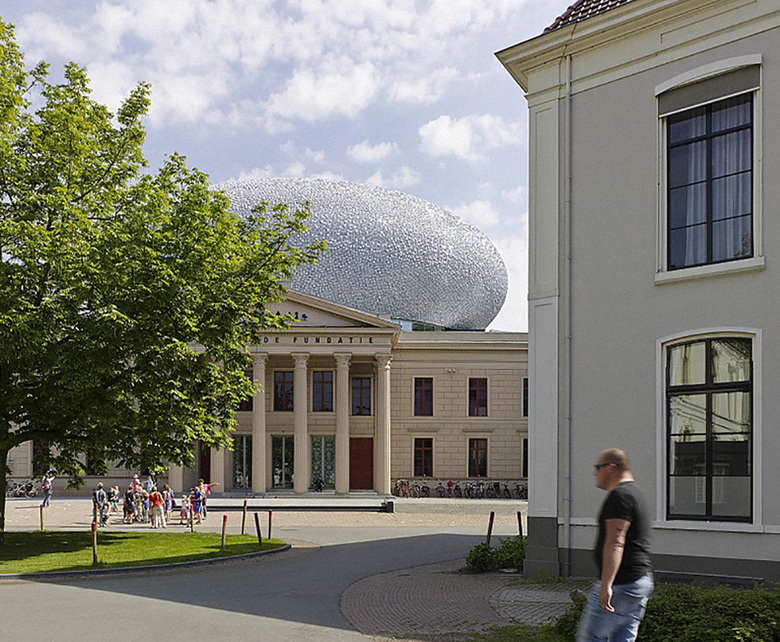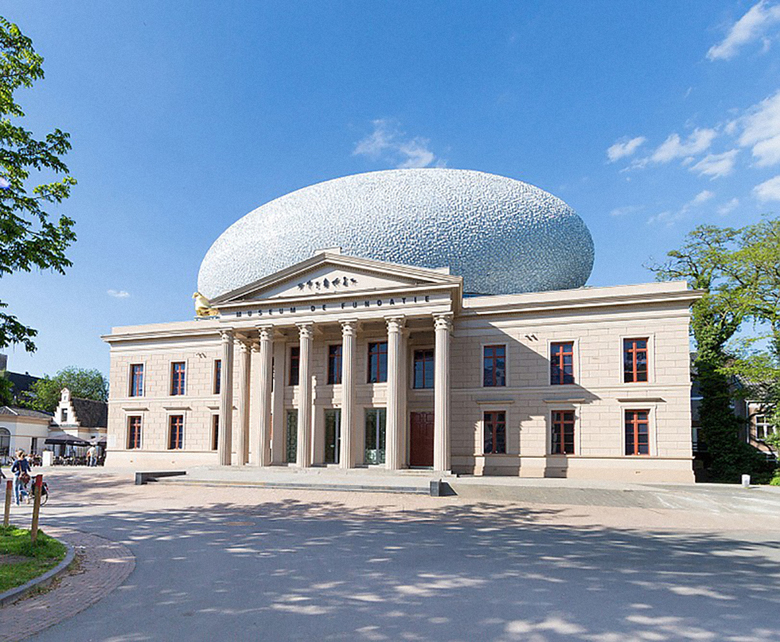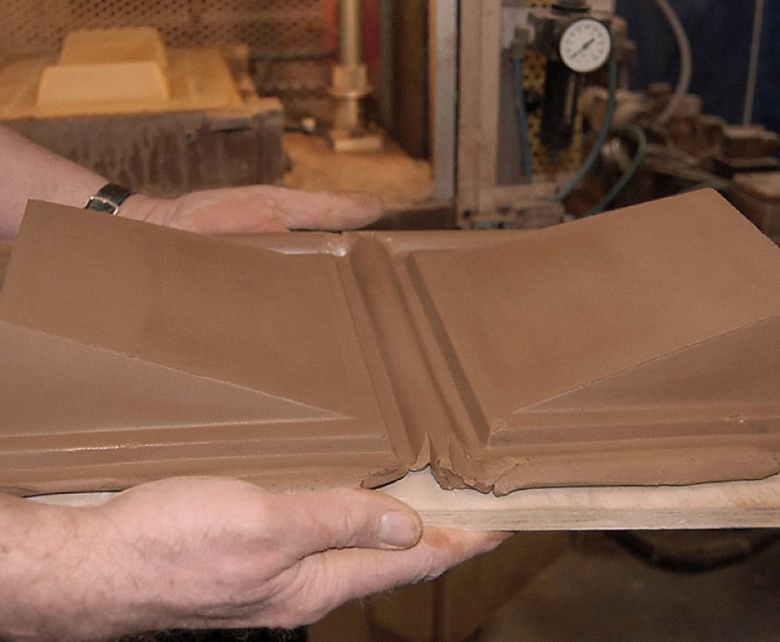Royal Tichelaar Makkum's Ceramic Cladding in Zwolle
From a distance Bierman Henke Architects' egg-shaped "Art Cloud" at the Museum de Fundatie resembles a stucco-like surface, but up close one can see that it is made up of ceramic tiles, over 50,000 of them in fact. Ceramic manufacturer Royal Tichelaar Makkum produced two sizes of tiles that were glazed in white with blue accents to give the impression that the addition blends into the sky.
The Museum de Fundatie in Zwolle, the Netherlands, has occupied an 1840 former courthouse since its renovation in 2005. While formally at odds with this neoclassical building, Bierman Henke Architects' 2013 egg-shaped extension respects the neoclassical building's symmetry by building straight up rather than to one side. From a distance what is alternatively called "The Eye" (thanks to a north-facing window overlooking the old town) or the "Art Cloud" resembles a stucco-like surface, but up close one can see that it is made up of ceramic tiles, over 50,000 of them in fact. Ceramic manufacturer Royal Tichelaar Makkum produced two sizes of tiles that were glazed in white with blue accents to give the impression that the addition blends into the sky.
To support the addition, steel columns thread their way through the existing building to prop up the steel beams for framing the new floors and steel trusses for creating the ellipsoid form that is covered in plywood and standard EPDM roofing. A roughly 50/50 blend of tiles in two sizes – 10x10 cm (4x4") and 20x20 cm (8x8") – cover the exterior in a random pattern, with a few thousand more filler pieces making sure to eliminate any view of the black roofing. All tolled, the wedge-shaped ceramic tiles cover an area of 1,340 square meters (14,425 square feet).
While the "Art Cloud" is certainly a contemporary expression in Zwolle, the surface's execution by Royal Tichelaar Makkum is a mix of industrial techniques and traditional craft skills that hark back to the company's beginnings in 1572. According to Tichelaar, this diversity has enabled the company "to react to the requests of architects, artists and designers for materials and products that do not yet exist," since "developments in contemporary architecture and design show that there is an ever-increasing need for diversity and enhancement."





